The Settings tool allows foodservice designers from all backgrounds to customize KitchDesigner to fit their existing standards and workflows. Settings are saved to Revit project files when Revit is saved.
Please review this manual to have a better understanding of how our tools work with these settings, almost every tool on the KitchDesigner ribbon uses one or more of these settings.
Each of the Settings tabs has been separated into its own user manual.
All of the sections have the Getting Started section at the top.
Table of Contents
- Getting Started Video
- Getting Started
2.1- Saving Settings to a Revit Project
2.2- Managing your Settings file - MEP Devices tab
3.1- Electrical Devices
3.2- Plumbing Devices
3.3- Mechanical Devices
1. Getting Started Video
2. Getting Started
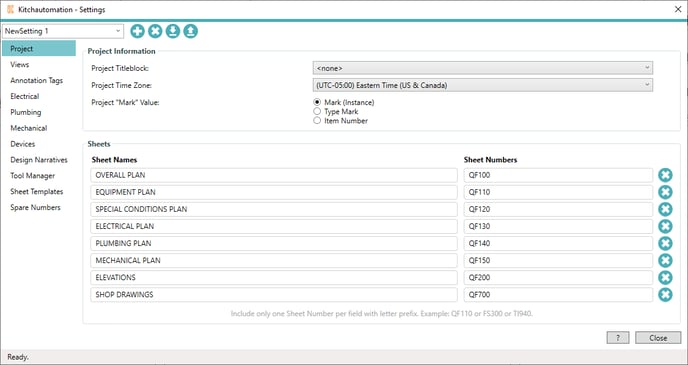

To begin click on the Settings button.
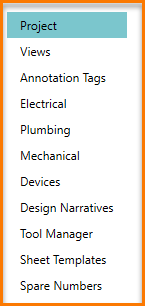
On the left side of the window is your navigation menu, you can click on the vertical list of topics to open a specific Settings tab.
Each tab contains a subset of settings that are used by one of the many KitchDesigner ribbon tools.
The Settings button opens to the Project tab.
2.1- Managing your Settings file

At the top of the Settings window is the Settings Toolbar. This contains the Settings file name and (4) buttons to help you manage your Settings file.
There are occasions where changes in KitchDesigner Settings may need to be distributed to a team of users or you may just want to save a backup, in these occasions you can use the Settings toolbar to export settings to other users that can then import them.
Many of the settings are just links to Revit families and elements in your Revit project, if you import a Settings file into a Revit project that does not also contain these families then those links will be broken and the settings affected will be empty.
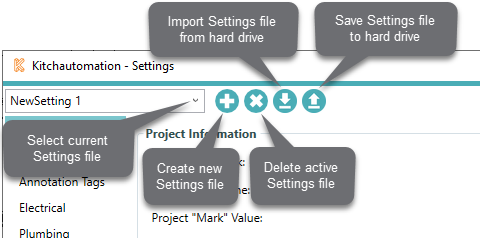
![]() Export Settings files as JSON files and save them to your hard drive.
Export Settings files as JSON files and save them to your hard drive.
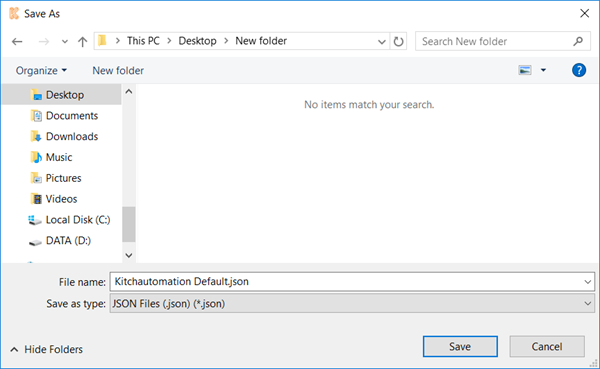
![]()
Import Settings files by selecting them using the file browser.
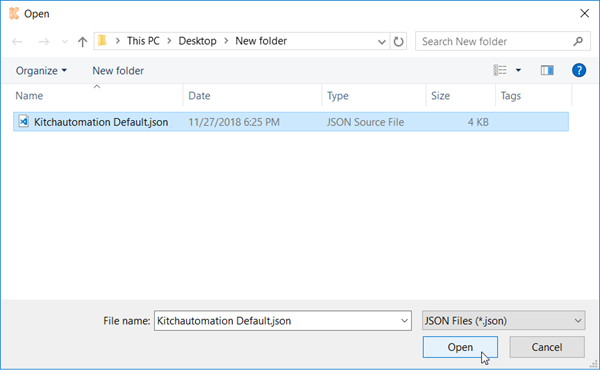
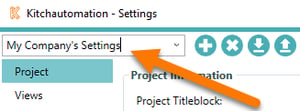
Settings files can also be renamed by clicking on the text to reveal a cursor.
2.2- Saving Settings to a Revit Project
A key feature of Settings is that when a Revit project is saved, the active Settings file is also saved to the Revit project file at the same time. This essentially binds the KitchDesigner settings to the Revit project file after each Save.
If the same Revit file is opened by another user on a different computer, all the settings will be just as they were when the Revit project was last saved.
In context of a Revit template file, once you have configured your company settings all you need to do is save your Revit template file and your Settings will also be saved. Any future user of this template will have their Settings pre-configured for their use without ever having to open Settings.
This works great for new projects but for all of your existing projects you will still need to use the Import and Export Settings buttons on the Settings toolbar.
3. MEP Devices
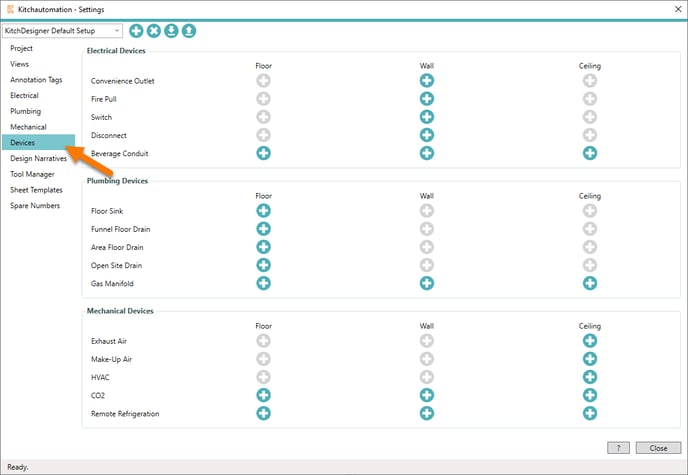
The MEP Devices tab is used to specify Electrical, Plumbing, and Mechanical devices that can be placed with their own unique buttons.

Each individual device is tied to a unique button that once pressed, will place the specified family at the end of your mouse so you can place it in your project.

These buttons are inactive until the device is specified.
The top row is for Electrical Devices, the middle row is for Plumbing Devices, and the bottom row is for Mechanical Devices.
The last used device in each row will become the visible button on the ribbon.
3.1- Electrical Devices

To specify an Electrical Device, click the ![]() button to reveal the dropdown.
button to reveal the dropdown.
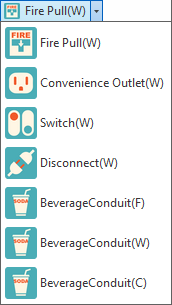
Electrical Devices can be any family from the following family categories:
- Electrical Fixtures
- Electrical Equipment
- Data Devices
- Conduit Fittings
- Fire Alarm Devices
Once the Device is specified, the button will become active on the ribbon.
 If you specify a Device and the ribbon buttons still show up as inactive, click the small black arrow to open the button dropdown and the specified Device will be active.
If you specify a Device and the ribbon buttons still show up as inactive, click the small black arrow to open the button dropdown and the specified Device will be active.
3.2- Plumbing Devices

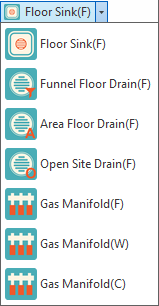 Plumbing Devices can be any family from the following categories:
Plumbing Devices can be any family from the following categories:
- Plumbing Fixtures
- Pipe Fittings
- Pipe Accessories
- Mechanical Equipment
Once the Device is specified, the button will become active on the ribbon.

If you specify a Device and the ribbon buttons still show up as inactive, click the small black arrow to open the button dropdown and the specified Device will be active.
3.3- Mechanical Devices

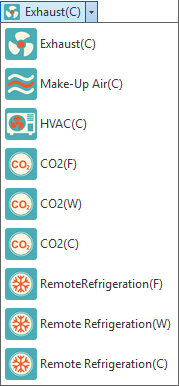 Mechanical Devices can be any family from the following categories:
Mechanical Devices can be any family from the following categories:
- Mechanical Equipment
- Duct Devices
- Plumbing Fixtures
- Pipe Fittings
- Pipe Accessories
Once the Device is specified, the button will become active on the ribbon.
 If you specify a Device and the ribbon buttons still show up as inactive, click the small black arrow to open the button dropdown and the specified Device will be active.
If you specify a Device and the ribbon buttons still show up as inactive, click the small black arrow to open the button dropdown and the specified Device will be active.
